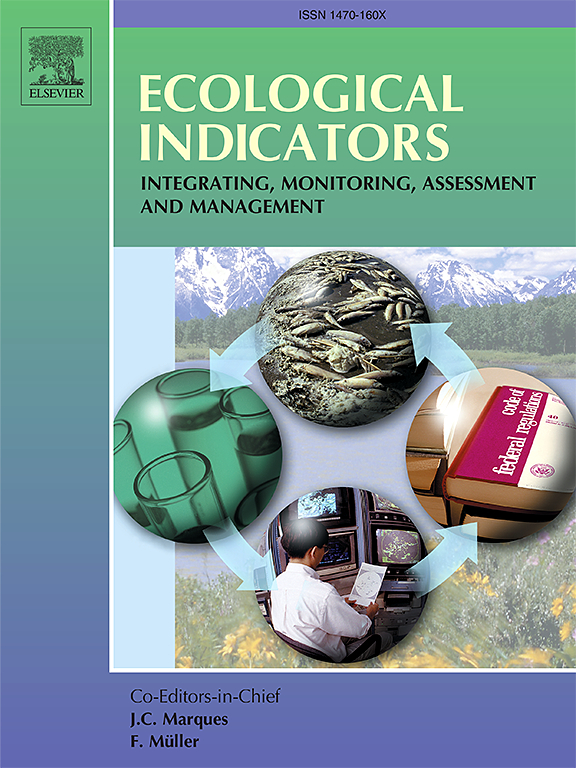Carabid beetles as indicators of stream zonation
IF 7
2区 环境科学与生态学
Q1 ENVIRONMENTAL SCIENCES
引用次数: 0
Abstract
Rivers and streams are characterised by longitudinal changes in hydrology and aquatic communities. Due to the strong connectivity between watercourses and adjacent terrestrial ecosystems, riparian communities might also show characteristic changes along stream courses. Although carabid beetles are often used as ecological indicators in riparian habitats (e.g., to monitor restoration success), little is known about how they indicate stream zonation. We conducted a study of riparian habitats at five streams, each sampled in three near-natural sections upstream, midstream and downstream, to analyse changes in carabid beetle abundance, species richness, indicator species and functional trait composition along stream courses. Carabid beetles were sampled using pitfall traps and hand collections in May and September 2023. Carabid abundance, species richness and functional diversity increased significantly from upstream to downstream. Carabid communities shifted from a dominance of large-bodied and short-winged species in the upstream zone towards smaller and long-winged species downstream. In addition, 11 indicator species were identified in the downstream zone, compared to only two in the upstream and one in the midstream zone. In contrast, the percentage of riparian habitat specialists peaked midstream. Changes in carabid communities were likely driven by increasing size of the riparian area and soil pH along the course of the streams, likely reflecting the increasing hydrological connectivity and sediment deposition. Our findings clearly showed longitudinal changes in the community structure and trait composition of carabid beetles along streams. We conclude that carabids are therefore excellent ecological indicators of the zonation of the riparian zone of small streams.

求助全文
约1分钟内获得全文
求助全文
来源期刊

Ecological Indicators
环境科学-环境科学
CiteScore
11.80
自引率
8.70%
发文量
1163
审稿时长
78 days
期刊介绍:
The ultimate aim of Ecological Indicators is to integrate the monitoring and assessment of ecological and environmental indicators with management practices. The journal provides a forum for the discussion of the applied scientific development and review of traditional indicator approaches as well as for theoretical, modelling and quantitative applications such as index development. Research into the following areas will be published.
• All aspects of ecological and environmental indicators and indices.
• New indicators, and new approaches and methods for indicator development, testing and use.
• Development and modelling of indices, e.g. application of indicator suites across multiple scales and resources.
• Analysis and research of resource, system- and scale-specific indicators.
• Methods for integration of social and other valuation metrics for the production of scientifically rigorous and politically-relevant assessments using indicator-based monitoring and assessment programs.
• How research indicators can be transformed into direct application for management purposes.
• Broader assessment objectives and methods, e.g. biodiversity, biological integrity, and sustainability, through the use of indicators.
• Resource-specific indicators such as landscape, agroecosystems, forests, wetlands, etc.
 求助内容:
求助内容: 应助结果提醒方式:
应助结果提醒方式:


